A lasagna-like dish, this vegan Greek moussaka is made with a layer of roasted vegetables, a lentil Bolognese filling and topped with creamy plant-based béchamel.
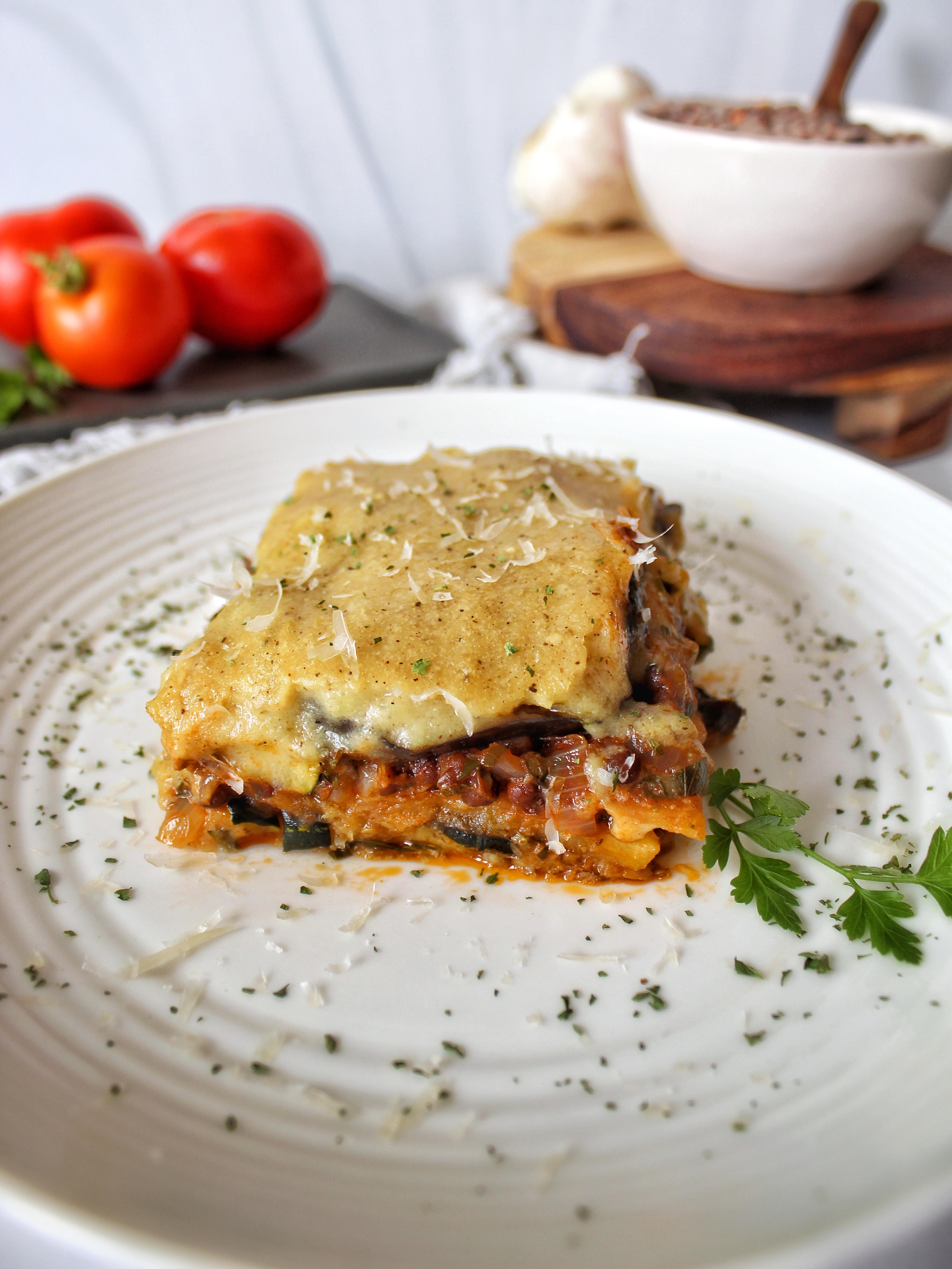
Writing up this post on vegan Greek moussaka is making me incredibly nostalgic. We have stopped traveling in the midst of this global pandemic but we certainly wish we were in Greece right now, lounging by the beach and stuffing our faces!
Moussaka is one of my favorite Greek dishes but let me be honest up front: it’s not a quick dish. Most of the recipes that I like to create here on The Whole Scoop are simple and easy and relatively quick. Unfortunately, several of these Greek dishes are not quick. However, they’re off the charts delicious so I can’t help but make them!
Moussaka is a wonderfully layered dish, much like lasagna, with roasted veggies, a “meat” sauce, and topped with a creamy and cheesy béchamel sauce. Then it’s baked to integrate all the flavors together. For me, this is one of my ultimate comfort foods.
The Ingredients
Since there are several layers to this moussaka, let’s discuss the ingredients.
The veggies. Traditionally, the vegetable layers of the moussaka are made with potatoes and eggplant, however, I’ve also used zucchini. In the traditional method, we layer potatoes and eggplant. For a lower carb method, we layer eggplant and zucchini. My favorite is the ultimate comfort food method in which we layer potato, zucchini and eggplant!
The meat sauce. By now you know that The Whole Scoop is plant-based so there will be no meat sauce here. Instead, we’re crafting a savory and delicious filling in the form of lentil Bolognese. Hearty lentils, tangy tomato sauce and fragrant herbs.
The béchamel. Bechamel is a creamy and buttery white sauce made from butter, flour and milk. As you can see, that’s a whole lotta dairy. No worries here though – fortunately the plant-based world has substitutions for all of that! We’re also adding a little bit of cheese (vegan cheese, of course) to kick up the flavor a notch.
All three of these layers come together to forge a lasagna-like compilation that’s bursting with veggies, hearty lentil sauce and silky, buttery sauce.
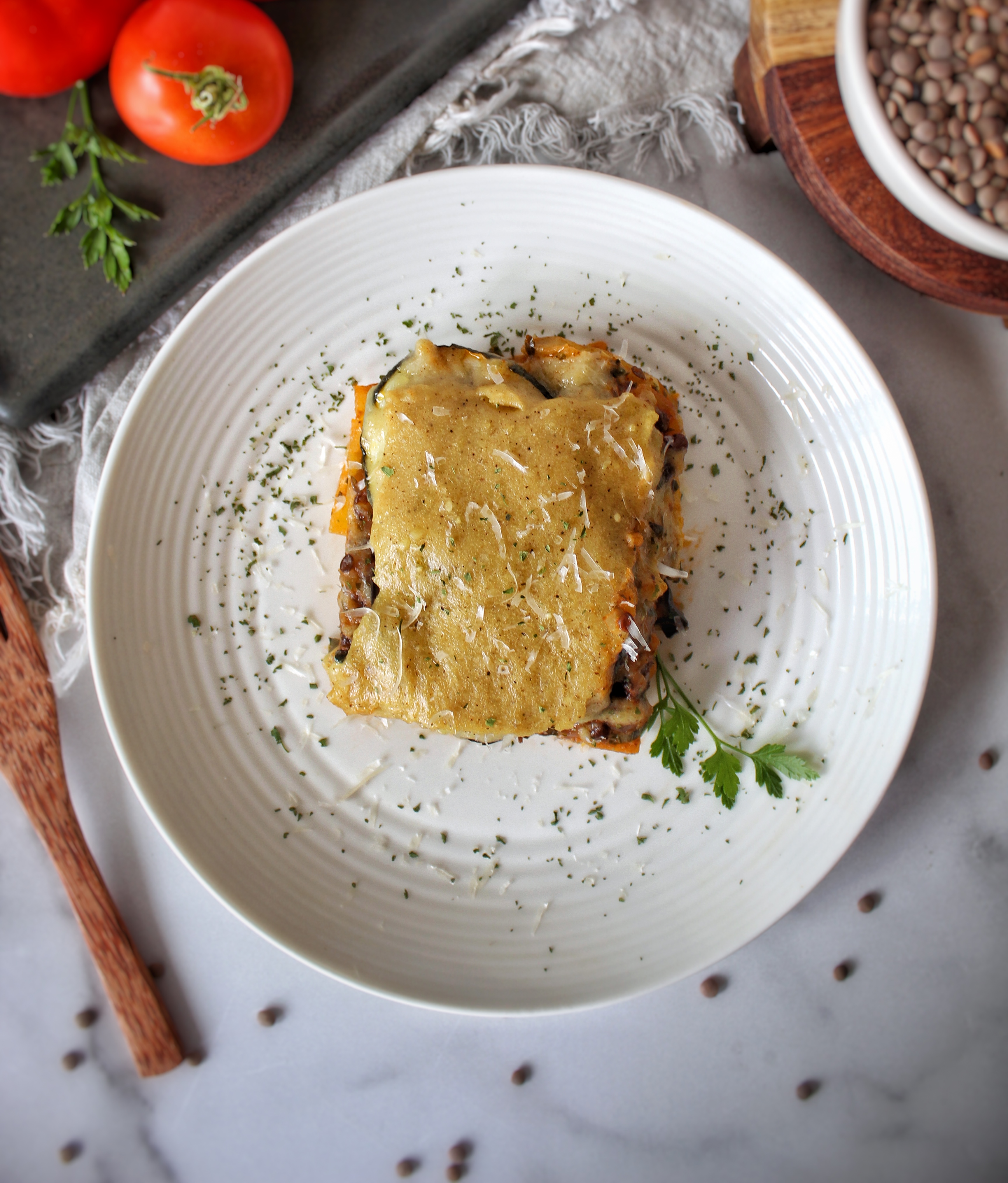
The Cooking Process
First, let’s start with talking about the process. There are five key pieces to to making this vegan moussaka. Let’s break it down so you know what you’re getting into!
Roasting. Traditionally, the eggplant and potatoes are fried before assembly. To make this dish a bit healthier, we’ll be roasting our veggies instead of frying. We’ll slice the veggies into rounds and then roast with a hint of olive oil, salt and pepper.
Lentil Bolognese. We’ll be crafting our lentil Bolognese from canned lentils in an effort to reduce the cooking time. However, if you prefer to cook dried lentils instead, that’s no problem at all! Simply boil beforehand (before you roast the veggies) and that way, the lentils will be ready for the Bolognese while your veggies are roasting.
Layering. I always layer the bottom of the pan with potatoes as the potatoes hold up the best under the weight of the filling. I layer like this: potatoes, eggplant, lentil Bolognese, zucchini, eggplant, béchamel.
Bechamel. This sauce is quite easy and only take a few minutes to whip up! We start by creating a roux, cooking flour in melted butter until just golden brown. Then we add all the rest of our ingredients to form a creamy, buttery sauce.
Baking. Once all the layers are assembled, we bake for just a short time to help all the flavor incorporate. After baking, it’s best to let the moussaka sit so the sauce and layers can set. I know you’ll want to dig into it immediately, like me, but it really is best to wait!
Give it a try!
I know that there are a lot of elements to this dish. Lots of ingredients and layers and there is quite a bit of work involved. However, this is one of those dishes where the reward is worth the work! I promise! It’s also great because this recipe makes a pretty good size portion: 9-12 thick squares in a 9×13 pan. It’s great to share with family and friends or great for meal prepping. This vegan Greek moussaka holds up pretty well in the fridge for 3-4 days.
I hope you’ll give it a try!
If you love Greek food, check out more of my traditional recipes here!

Vegan Greek Moussaka
Ingredients
- 3 large eggplant
- 3 large zucchini
- 2 lbs yellow potatoes
- 1 15oz can of lentils or 1lb dry
- 1 8oz can of tomato sauce
- 1 large yellow onion, diced
- 3-5 cloves of garlic, minced
- 1/2 cup water or veggie broth
- 1/3 cup chopped fresh parsley
- 2 tbsp dried oregano
- salt and pepper, to taste
- 1/4 cup extra virgin olive oil
Bechamel Sauce
- 3 3/4 cup oat milk
- 5 tbsp vegan butter
- 3 tbsp nutritional yeast
- 4.5 tbsp corn starch
- 4 tbsp semolina flour white or wheat flour works too
- 3/4 tsp cinnamon
- 1.5 tsp onion powder
- salt and pepper
- 1/4 cup + 2 tbsp grated vegan parmesan
- pinch of nutmeg optional
Instructions
Start with the Veggies
- Preheat oven to 400.
- Peel the potatoes and slice into rounds. Slice the eggplant and zucchini into rounds.
- Place the veggies in a single layer on parchment-lined or silicon baking mat on baking sheets. Roast the veggies for about 20 minutes. Remove and set aside.
- While the veggies are roasting, prepare the lentil Bolognese.
Lentil Bolognese
- Add the diced onion and garlic to a skillet with the olive oil. Sauté for about three minutes until soft and translucent.
- Add the lentils, tomato sauce, water/veggie broth, parsley, oregano and salt and pepper. Once bubbling, reduce the heat to medium and sauté until the liquid is mostly evaporated and the lentil Bolognese has thickened, about 5-7 minutes.
The first layers
- Lightly spray or coat a 9×13 pan with olive oil.
- Begin with the potatoes and add a single layer of potatoes to the bottom of the pan, close together and minimizing gaps. If there are extra, set them aside.
- Then layer the eggplant on top of the potatoes, slightly off center to try and close the gaps. Again, keep close together, minimizing the gaps between the eggplant slices. If there are extra, set them aside.
- Spread the lentil bolognese evenly across the top of the eggplant.
- Add the layer of zucchini rounds on top of the lentils. Then add the rest of the eggplant/potatoes, minimizing gaps where you can by layering close together.
The Béchamel
- First, have the butter, milk and flour measured out and ready.
- In a big pot, melt the butter over high heat. Do not let it brown. When it's just melted, add the flour and whisk it around. It should start to turn golden brown. Do not burn it. Once the flour is browned, add the milk. Bring to a boil.
- Add the rest of your ingredients: nutritional yeast, corn starch, cinnamon, onion powder, salt and pepper, and grated parmesan. Reduce to medium heat and whisk vigorously until the sauce begins to bubble and thicken, about 5 minutes or so. Continue to whisk so the sauce doesn't burn.
- Once you have a thick and creamy sauce, remove from the heat and pour it over the layers of vegetables and lentils.
Baking
- Once the bechael sauce has been layered on top, add to the 400 degree oven and bake about 25-30 minutes. The sauce on top will turn to a golden brown and develop a hint of a crust.
- Remove from the oven and let sit for 10-15 minutes so it can set.
Notes
Did you make this? Leave a comment below and share a picture on Instagram with the hashtag #thewholescoopblog
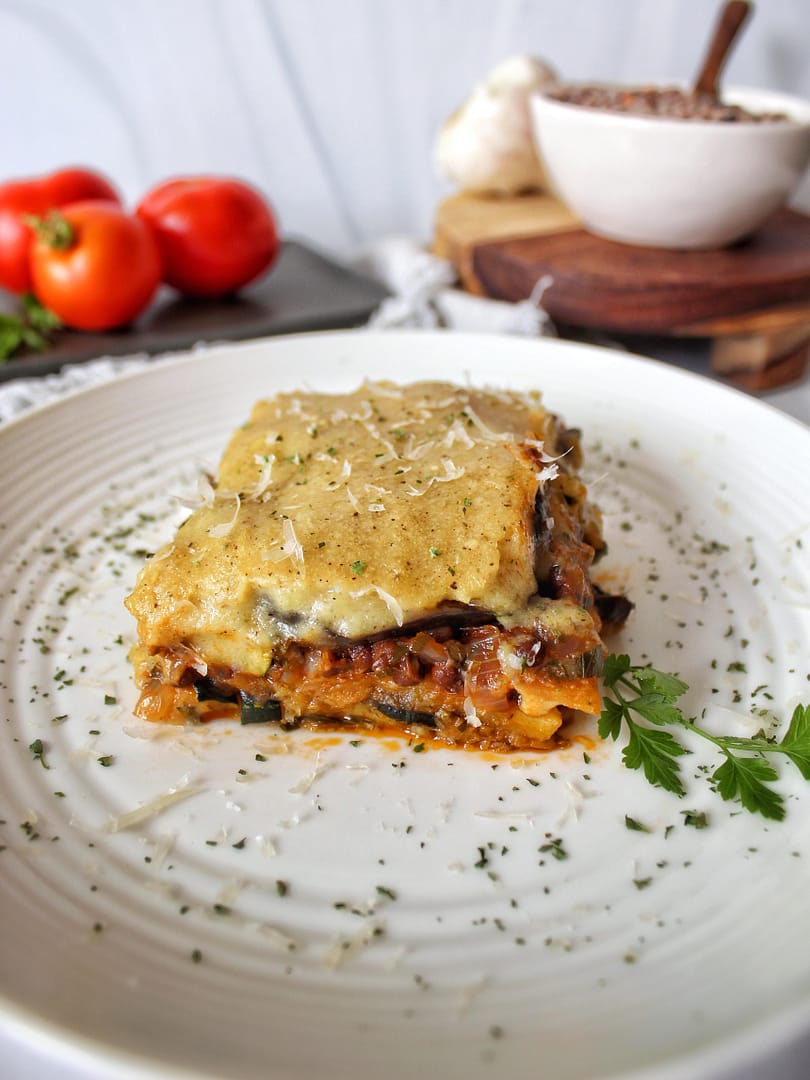

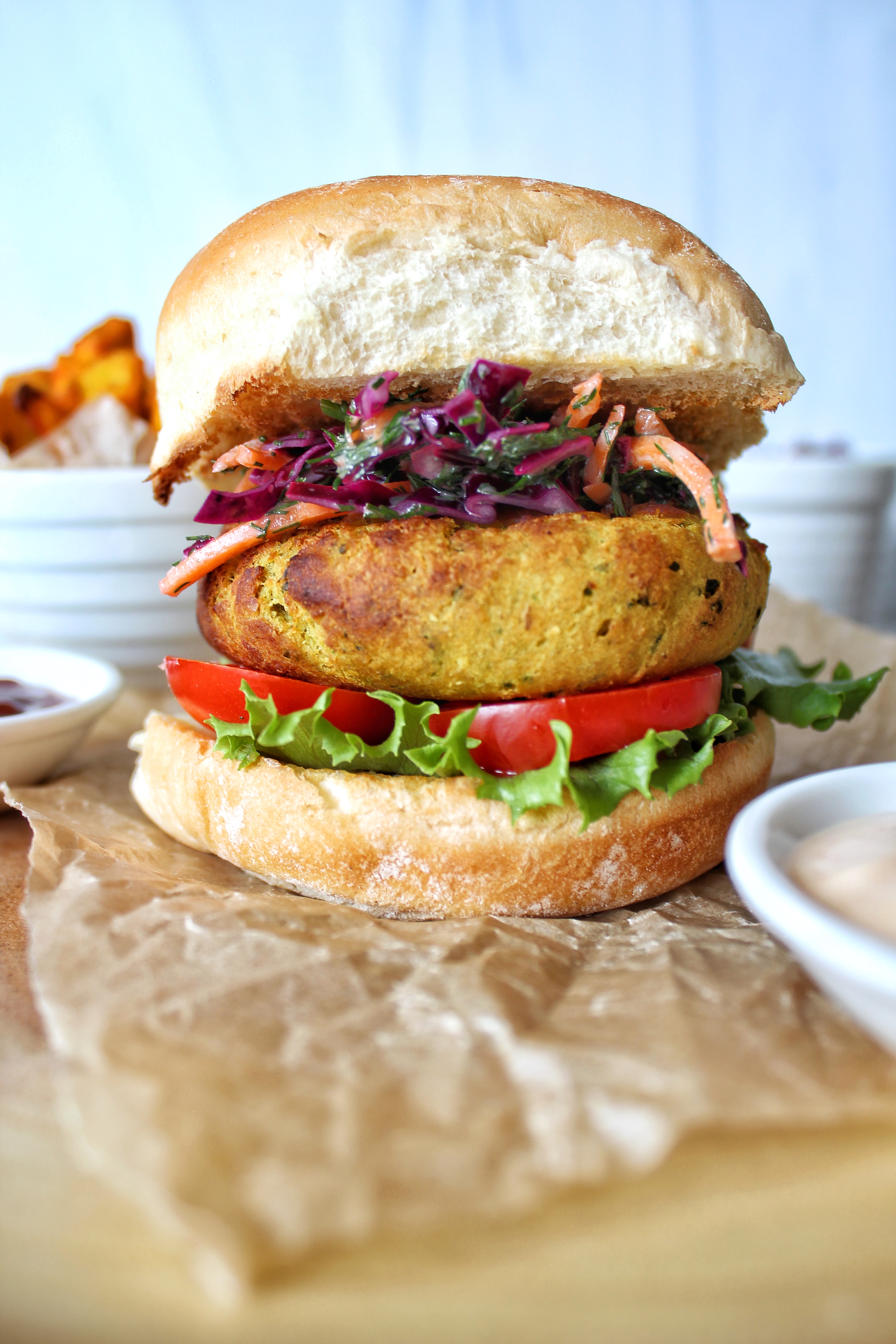


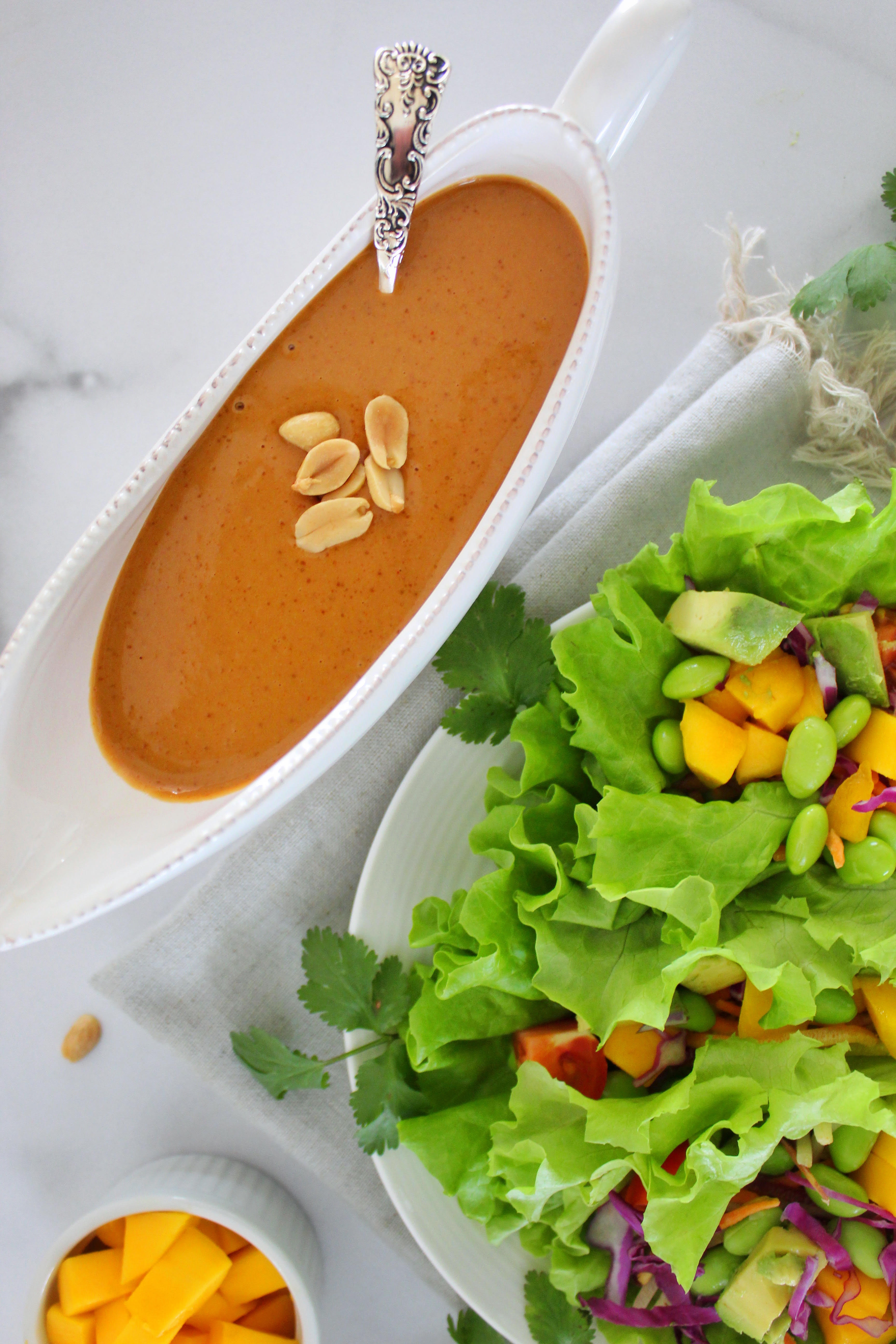
3 Comments
Rumen Vasilev
The recipe is quite on point with the original recipe.
One note though, Musaka is not with Greek in origin. Its more of a Balkan thing.
Almost every Balkan country (including Turkey) has its own version of it, just like Banitza (or Bürek).
If anything the name is Turkish and maybe all the Balkan people got it from th
Rumen Vasilev
The Osman Empire (nowadays Turkey) during their reign here.
So for me the correct name should be “Vegan Balkan Moussaka”. Yes, its not as interesting and known as “Greek” but the Greeks have a habit of “taking” Balkan things and making then “100% Greek”, no offence 🙂
Stella Scaramangos
Hi, Rumen! You’re right – the original roots are Balkan! I labeled it Greek because this is my family’s Greek version. The Bechamel version of Moussaka was created in the 1920’s by a Greek chef. But before that, the roots are absolutely Balkan and some even say, Middle Eastern. This region of the world is so fascinating because of the transience and travel throughout history. SO many of these dishes have several variations in different countries in this region. Just like my grape leaves too – I call them Greek because they’re my family’s version but the roots of the dish go back to the Middle East. Thank you for your comment!